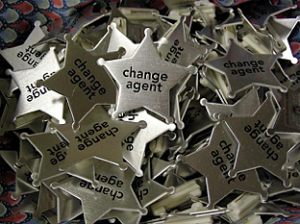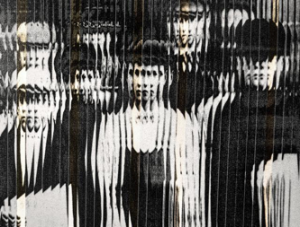 Apparently, I once taught a ‘Grade A’ lesson. I know this because it said so, on a slip of paper in the small, brown envelope that appeared in my staffroom pigeonhole following a UK school inspection (because that is how we received feedback in those days). I therefore assumed that my careful grouping of students by ability to explore poems of varying difficulty reflected best practice. I patted myself, perhaps rather smugly, on the back.
Apparently, I once taught a ‘Grade A’ lesson. I know this because it said so, on a slip of paper in the small, brown envelope that appeared in my staffroom pigeonhole following a UK school inspection (because that is how we received feedback in those days). I therefore assumed that my careful grouping of students by ability to explore poems of varying difficulty reflected best practice. I patted myself, perhaps rather smugly, on the back.
Ten years later, a chance conversation with a colleague about inclusive learning design sent me back to that lesson. As I reflected on my actions from that day with new thinking about building in universal support for those least well served, I began to see that my lesson (in which I made all the choices, making assumptions about students as I went) had not lined up as well with my beliefs around inclusive learning as I (smugly) thought it had.
That moment of seeing alternative ways to design more equitable learning was one that triggered a deep shift for me as an educator that is still colouring my work today.
Why change?
Many of us prefer to continue along familiar paths as we have always done rather than face the challenge of change, especially if the imperative for that change is coming at us from elsewhere. And in education, we are frequently told that we must expect, embrace and plan for constant change: in students’ needs, in current research, in policy, in economics….Being ‘adaptive’ is the word du jour.
The international discourse on transformation can be helpful but also needs to be viewed objectively. Papers from the OECD that exhort change offer indicators for innovation (OECD, 2015) become often quoted as truth and research that chimes with current trends can be amplified without analysis (see blog analysis from Videri, 2015). Here in NZ, the emphasis on super-diversity and inequity for underserved groups of learners is also pushing us to look closely at whether our visions for learning matches our actions.
It can all feel rather exhausting.
And yet – I rarely meet an educator who doesn’t want to keep on doing their best for their learners, and many organisations work incredibly hard to support their staff to develop practice in ways that are truly meaningful.
It is important to understand that contemporary educational thinking offers different – but not necessarily ‘true’ – theories for change. It is up to us in our corners and communities of NZ to understand and distill different models and theories about what we believe will work best for learners and enact it. The greatest challenge is to be able to look objectively at what we are doing, to spot when our words and actions do not, as we might believe, reflect our desire to engage and meet the needs of each of our learners.
The New Zealand Curriculum and Te Marautanga o Aotearoa invite us to think about those learners – to make sure we set up the conditions so everyone is ‘in’ – and can engage and be supported. Sometimes we do this well, but how do we know when we could be even better?
How might we create conditions for change, for the good of our learners, that feels less like compliance in response to extrinsic policy – and more like a meaningful journey of personal growth that each of us can own?
“It is important for teachers to see the value of participating, a clear link between professional development, their own practice, student progress, and school improvement”” (OECD, 2016, p. 43)
What happens when we transform our thinking?
 Have you ever experienced an event that shifted your view on life irretrievably?
Have you ever experienced an event that shifted your view on life irretrievably?
When a close family member was diagnosed with high-functioning autistic spectrum disorder (ASD), followed swiftly by a second diagnosis of ADHD, a profound shift occurred for us. Life suddenly appeared through a different lens. We could now explain why some activities were so easy while some events in the past had been so challenging. A dissonance had occurred for us, between our past thinking and beliefs about ‘disability’, and our present. And we also saw that our own words and actions would now need to be forever altered.
This ‘dissonance’ lies at the heart of deep, transformative change and contemporary educational research suggests that this lies at the heart of ‘modern’ practice and leadership (Gilbert & Bull, 2015; Roberston, 2015). Research in this space is well established. In 1991, Mezirow described transformation as engaging in “critical reflection on experiences” which leads to a change in perspective, and the theories behind it can now be seen in theories of professional learning that seek to change practice (Gilbert & Bull, 2015; Timperley et al., 2007)
How might we create conditions for our own ‘transformation’?
Ken Robinson uses a powerful metaphor to describe the way we can support learners (adult and child) to have control over their own change:
“Nobody else can make anybody else learn anything… Anymore than if you are a gardener you can make flowers grow, you don’t make the flowers grow. You don’t sit there and stick the petals on and put the leaves on and paint it…The flower grows itself. Your job if you are any good at it is to provide the optimum conditions for it to do that, to allow it to grow itself.” (Robinson, keynote, 2007)
 How can school leaders create a ‘garden’ in which growth and change can be in the hands of those who give effect to the curriculum and community vision every day?
How can school leaders create a ‘garden’ in which growth and change can be in the hands of those who give effect to the curriculum and community vision every day?
To create the conditions for that all-important dissonance to occur safely and in a sustainable way, we might think about the professional learning processes we design for ourselves.
For example:
- Commit to inclusive, equitable approaches for staff learning: Engage staff early and often about what works for them, what barriers they perceive, what strengths they can bring. Frameworks such as Universal Design for Learning can be helpful to co-critique the timetabling, management and design of professional learning. Understand what works well for learners. Six themes for adult learners (Knowles) might be helpful.
- Agree as a group to use a framework that safely surfaces ‘dissonance’: There are many frameworks available to underpin ways of learning – Spirals, Teaching as Inquiry, Appreciative Inquiry, Design Thinking…essentially, you are looking to choose a process that invites you to look at evidence from the learners’ experiences to surface (mis)alignment and assumptions between beliefs and what is actually happening for them. This offers a starting point for discussions about practice now and next practice.
- Have all voices at the table: Go wide with your evidence – learners’ views and stories; whānau experience; assessment information; cross-staff practices. New solutions come from new partnerships.
- Embed these learning and change conversations in everyday professional inquiry: There are many templates out there to help us do this such as the Ladder of Inference (Argyris & Schon), double-loop learning and Practice-Analysis Conversations.
Questions to ponder: A mini-inquiry
It might be useful for leaders to create a mini-inquiry about the impact of current professional learning approaches before planning on bringing in new ideas:
- How might you find out how all staff (including RTLBs, part-time staff, relievers) feel about the current approach to and design of professional learning?
- How wide do you throw the net when looking for evidence of current practice? Do you regularly ensure all voices – particularly those less often heard like learners and their whānau – are not only heard but acted on?
- How might you scaffold learning conversations in ways that invite deeper investigation around intentions, actions and impact?
References
- Gilbert, J. & Bull, A, with Stevens, L. & Giroux, M. (2015). On the edge: Shifting teachers’ paradigms for the future.Wellington: Teacher & Learning Research Initiative
- OECD (2015). Schooling redesigned: Towards innovative learning systems. Centre for Educational Research and Innovation: OECD.
- Robertson, J. (2015). Thinkpiece on leadership education in New Zealand. Education Council.
- Marzano et al. (1995). A new paradigm for educational change. Education, 116(2).
- Schleicher, A. (2016) Teaching excellence through professional learning and policy reform: Lessons from around the world, International Summit on the Teaching profession, OECD Publishing, Paris.
- Smith, M. K. (2001, 2013). ‘Chris Argyris: theories of action, double-loop learning and organizational learning’, the encyclopedia of informal education. [http://infed.org/mobi/chris-argyris-theories-of-action-double-loop-learning-and-organizational-learning/. Retrieved: 25 October 2015]
- Timperley, H., Kaser, L., and Halbert, J. (2014, April). A framework for transforming learning in schools: Innovation and the spiral of inquiry. Centre for Strategic Education, Seminar Series Paper, No. 234.
- Timperley et al. (2007). Best Evidence Synthesis: Teacher Professional Learning and Development. Ministry of Education: Wellington.
Images
- David King—’Change Agent’ CC BY NC SA 2.0
- Robert Couse-Baker – ‘cognitive dissonance’ CC BY NZ
- Siestas – ‘Flower power’ CC BY 2.0
 Can we create conditions for transformation? by Karen Spencer is licensed under a Creative Commons Attribution-NonCommercial-ShareAlike 3.0 Unported License.
Can we create conditions for transformation? by Karen Spencer is licensed under a Creative Commons Attribution-NonCommercial-ShareAlike 3.0 Unported License.
This post was originally written for CORE Education

Great post Karen. I came across an ancient (in educational research years) text that I think you would find resonates with what you discuss here.
Rohrkemper, M., & Corno, L. (1988). Success and failure on classroom tasks: Adaptive learning and classroom teaching. The Elementary School Journal. 88(3) 296-312. http://www.jstor.org/stable/1001958
LikeLike